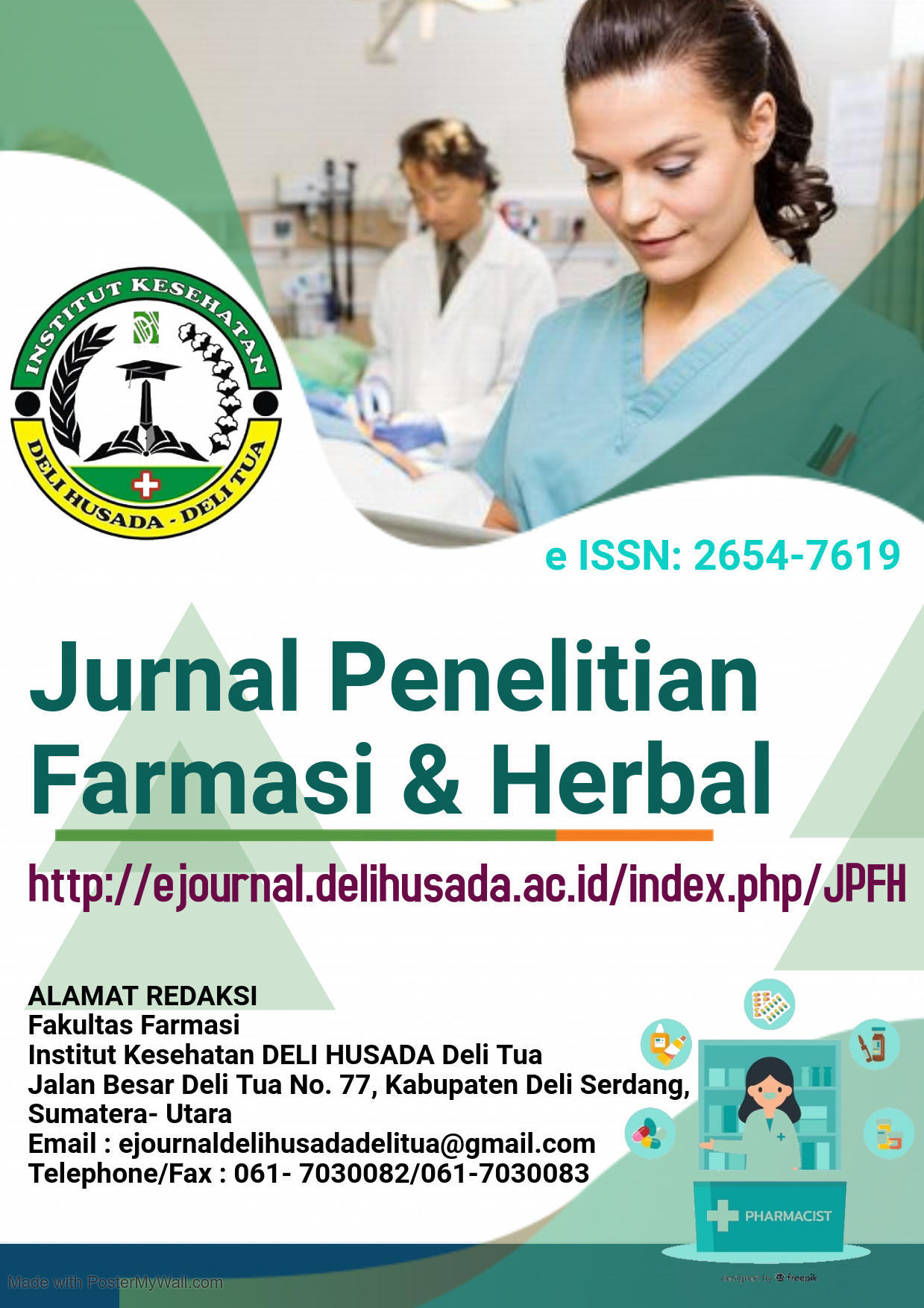PENETAPAN KADAR KAFEIN PADA BUBUK TEH HITAM YANG BEREDAR DI PASAR DELI TUA MENGGUNAKAN SPEKTROFOTOMETRI UV
Abstract
Tea is a drink that is very familiar in the world and is very common in everyday life. Tea is also the most consumed and favored beverage by the public after water. Besides being beneficial, tea also contains compounds that have a negative impact on the body, namely caffeine compounds. Caffeine is an alkaloid of the methylxanthine group which plays a role in increasing the work of psychomotor in the body, and side effects that can be caused are anxiety, irregular heartbeat, difficulty sleeping, tremors, diuresis and others. The purpose of this study was to determine the caffeine content in black tea powder circulating in the Old Deli market. This type of research is descriptive with a purposive sampling method. The analytical method used is qualitative with murexide and quantitative ultraviolet spectrophotometry with a wavelength of 267nm. The results of a qualitative analysis of all positive samples contained caffeine. The average quantitative yield of caffeine in brand A black tea powder was (4,82 ±0,0356)%, B brand black tea powder (4,89 ± 0,0173)% and C brand black tea powder (4,93 ± 0,0531)%. The validation test results obtained linearity r = 0,9984, LOD and LOQ is 0,8074 mcg/ml and 2,6914 mcg/ml ,% recovery = 100,07%, RSD = 0,33%. Based on the results of research conducted, it can be concluded that ultraviolet spectrophotometry can be used to determine caffeine levels in black tea powder.
Downloads
References
Badan Pengawasan Obat Dan Makanan Republik Indonesia. 2004. Ketentuan Pokok Pengawasan Suplemen Makanan, No.HK.00.05.23.3644, Jakarta.
Dewi, NV., Fajaryanti, N., Masruriati, E. 2017. Perbedaan Kadar Kafein Pada Ekstrak Biji, Kulit Buah dan Daun Kopi (Cofffea Arabica L.) dengan Metode Spektrofotometri Uv-Vis, Jurnal Farmasetis, Kendal. Vol 6(2).
Farjina, A., Jubahar, J., Sabirin, S. 2016. Penetapan Kadar Tanin Pada Teh Celup Yang Beredar Dipasaran Secara Spektrofotometri UV-VIS, Jurnal Farmasi Higea, Padang. Vol 8(2).
Haramita. 2004. Petunjuk Pelaksanaan Validasi Metode dan Cara Perhitungannya. Majalah Ilmu Kefarmasian, Dep. Farmasi. FMIPA-UI, Jakarta. Vol. 1 No.3.
Iqbal, AM. 2017. Teh Instan Rendah Kafein dari Teh Hitam, Jurnal Prosiding, Padang.
Irawati, D., Styawan, AA., Nurhaini, R.2018. Penetapan Kadar Kafein Pada Teh Oolong (Camellia sinensis) Dengan Metode Titrasi Bebas Air, Jurnal Urecol, Klaten.
Ningrum, EK., Murtie, M. 2013. Tumbuhan Sakti Basmi Berbagai Penyakit. Cetakan 1, Jakarta Timur: Dunia Sehat. Halaman 58-60
Sundalian, Melvia., Nugrahani, Ilma. 2018. Determinasi Kadar Kafein Produk Teh Hitam Indonesia Dengan Menggunakan Spektrofotometri FTIR. Journal of Pharmaceutical Science and Technology, Bandung. Vol.VII No.1.
Verawati., Harun, S., Satria, B. 2014. Penetapan Kadar Konsumsi Kafein Dalam Minuman Teh Seduhan Yang Beredar Di Pasaran Secara KLT-Densitometri, Jurnal Scientia, Padang. Vol 4(1).
Wardani, RK., Fernanda, MAH. 2016. Analisis Kadar Kafein Dari Serbuk Teh Hitam, Teh Hijau dan Teh Putih (Camellia sinensis L), Jurnal Farmasi dan Sains, Surabaya. Vol 1(1).







